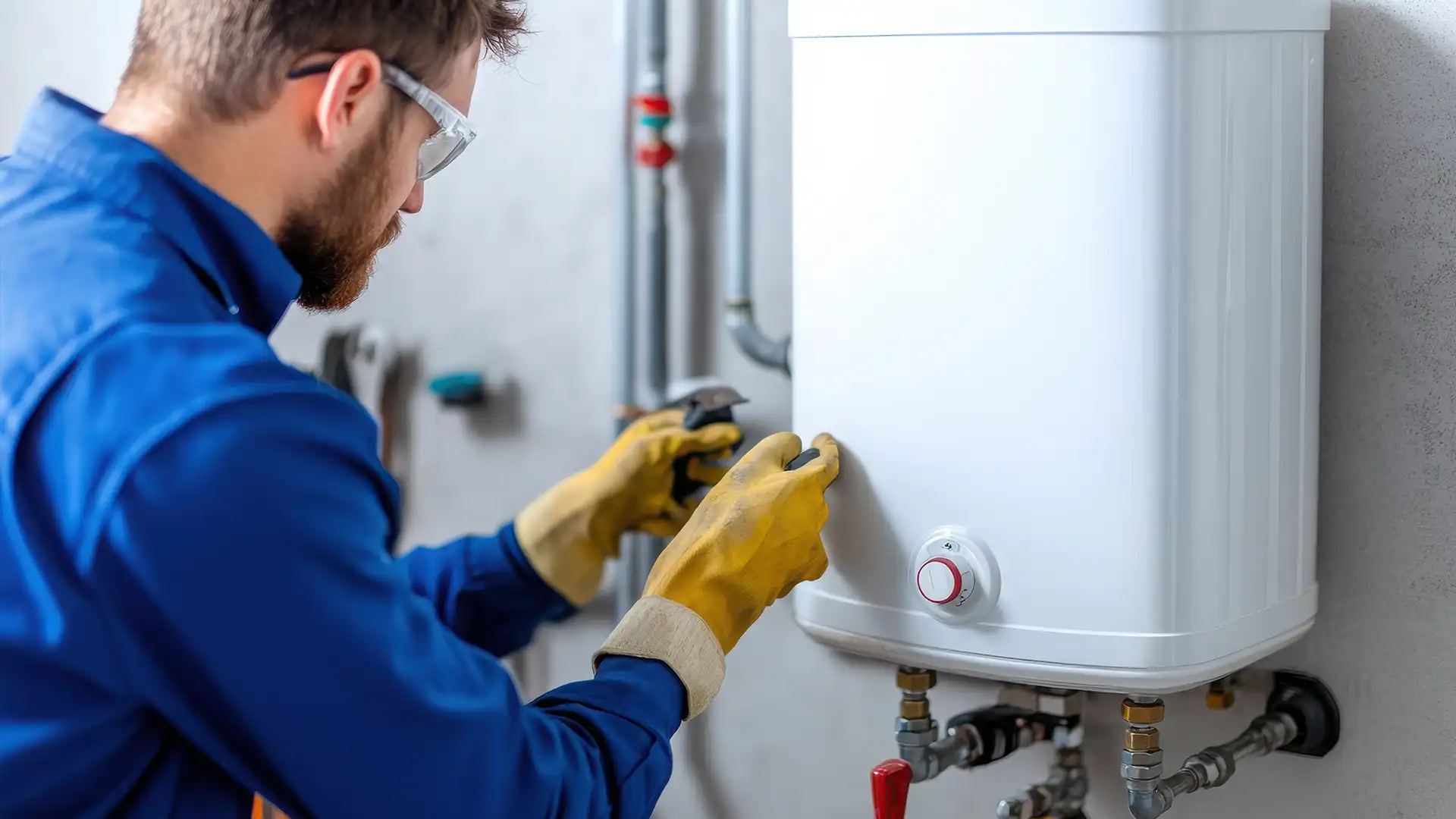What to Do If Your Hot Water Heater Is Not Working
A broken hot water heater can be a major inconvenience in your home. Fortunately, there are a few ways you can troubleshoot on your own before calling in the pros. We’ll break down the most common causes and step-by-step solutions in this troubleshooting guide.
Contact us if these steps are not working. We can dispatch a professional to your home at any time, day or night.
Warning: You should never begin inspecting your hot water heater when the power is on. Turn off the power source before you start working on it. To do this: Shut off the appropriate breaker in your home’s service panel.
Possible Causes of a Broken Hot Water Heater
There are a number of potential causes for a broken hot water heater. While some are easy enough for you to fix on your own, others should be carried out by a professional.
The most common causes for your broken hot water heater include:
- No gas supply
- Pilot light is blown out
- Tripped breaker
- Faulty high-temperature cutoff switch or heating elements
- A water leak
- A defective thermostat
- The water heater is unable to keep up with your home’s hot water needs
- A wire short
Solutions to Common Hot Water Heater Problems

Water Temperature Too HotIf your water is coming out scalding hot, you’ll want to find a solution quickly. This frustrating problem can burn you if you’re not expecting it, making it especially nerve-wracking for families with small children.The most common cause of water temperature remaining too hot is that both water heater’s thermostats are set too high.To get to the bottom of this problem quickly, start by shutting off the power to your water heater.Then follow these steps:
- Remove the access panel, insulation, and plastic safety guard from your water heater, avoiding contact with wires and terminals.
- Then check the heat settings. Heat settings should match on both thermostats. We recommend a setting at no higher than 125F. Adjust these settings as needed.
- After adjusting or checking the settings, replace the access panel, guard, and insulation before turning the heater’s circuit breaker.
Inadequate Amount of Hot WaterIf your unit is too large or requires a high demand for hot water, your hot water heater may be too small to meet the demand. You can try limiting the length of your showers and spacing out the use of the hot water for laundry and dishwashing.If the demand is not the problem, the inadequate amount of hot water could point to the failure of one or more heating elements.To determine which heating element has failed, pay close attention to when your hot water runs out during showers. If it is lukewarm throughout, your upper heating element has failed. If your hot water runs out quickly, it is the lower heating element that has likely failed.

No Hot Water (Or Lukewarm Water)If your water heater isn’t producing hot water, there could be a few root causes:
- The water heater isn’t getting power
- There is a tripped limit switch
To fix a tripped limit switch, switch it off and back on again. This should solve the problem. If not, you have a problem with the power source itself.Follow the steps below to fix it:
- After turning off your water heaters circuit, remove the access panel. You’ll also need to remove the insulation and safety guard.
- Next, press the red high-temperature cutoff reset button above the upper thermostat, being careful not to touch wires of terminals.
- Replace the insulation, safety guard, and access panel before turning the heater’s circuit breaker back on.
Discoloration of WaterBrown, yellow, or red-tinted water are not signs to be ignored. If water from your faucet is coming out with a strange color-tinted to it, you’ll want to consider replacing the anode rod.The color of the water could be an indicator of the problem. It could point to rust, high iron-percentage, or copper pipe corrosion. You may need to install a water filtration system or softener. But, you’ll want to check for calcifying.You can clean the heating elements with vinegar and water or sodium carbonate and water. This should fix the problem.

Odor to WaterAn odor to your water can present itself in a number of ways. The scent may be one of decay, sewage, or sulfur. This could point to bacteria growth or corrosion in the case your water smells like rotten eggs.This can be caused by water not being run for a period of time, as is the case with many vacation homes. Other causes include the water being off for a period of time or the thermostat being too low to kill off bacteria.To fix the anode rod:
- Remove and discard the existing anode rod after partially draining the water tank.
- Use Teflon tape to eliminate the risk of leaks. Tighten the new rod into place.
- Refill the tank.
- Observe and watch for continuing odor after turning the water heater back on.
If the problem persists, contact us to have a professional dispatched to your home for proper repair measures.Water LeaksLeaking generally points to plumbing problems. You’ll want to get water leaks taken care of quickly to avoid any water damage to your property.This will likely be caused by corrosion and loose parts. You can try to tighten any loose parts in your water heater, but some may need to be replaced by a professional.To put a stop to the leaking until you can get a repairman out to take a look, shut off the power and drain the hot water heater tank entirely.

